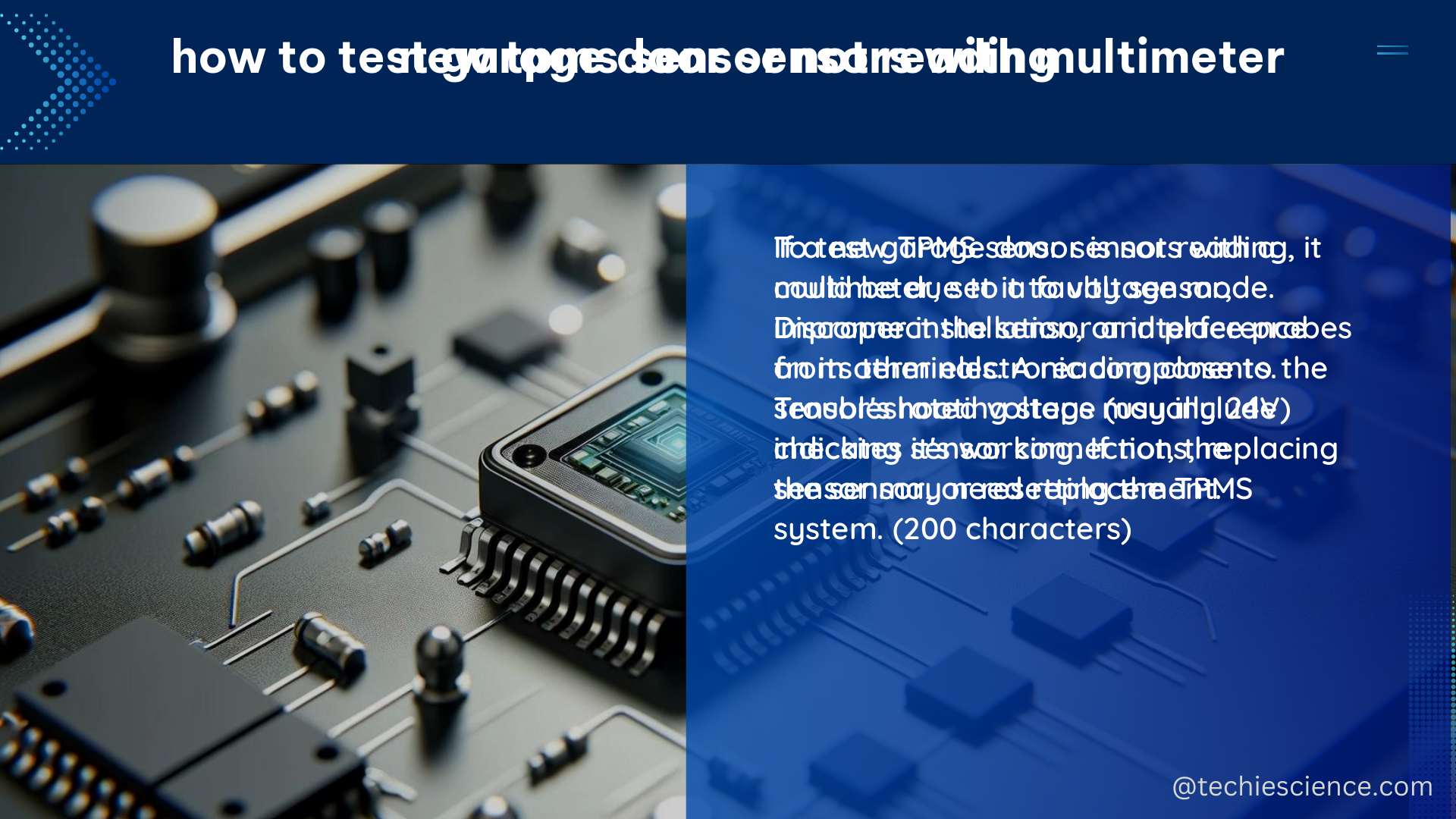New TPMS (Tire Pressure Monitoring System) sensors may not read accurately due to a variety of factors, including sensor tolerances, initialization issues, and the presence of multiple sensor sets. This comprehensive guide will provide you with the technical specifications, data points, and a step-by-step DIY troubleshooting process to ensure your new TPMS sensors are functioning correctly.
Technical Specifications of New TPMS Sensors
The technical specifications of TPMS sensors can vary depending on the make and model of the vehicle, but here are some general guidelines:
Frequency Range
TPMS sensors typically operate at frequencies between 315 MHz and 433 MHz, with the most common frequencies being 315 MHz in North America and 433 MHz in Europe and Asia.
Sensor Range
TPMS sensors have a typical range of approximately 10-30 feet, depending on the specific sensor and vehicle. This range can be affected by factors such as sensor placement, vehicle materials, and environmental conditions.
Battery Life
TPMS sensor batteries typically last between 5-10 years, depending on the specific sensor and usage. Factors such as sensor activation frequency and environmental conditions can impact the battery life.
Sensor Accuracy
TPMS sensors are designed to be accurate within +/- 2-3 psi of manual tire pressure gauges. This accuracy is necessary to provide reliable low-pressure warnings to the driver.
Sensor Tolerance
TPMS sensors have a tolerance of +/- 7.5 kPa (1.1 psi) for absolute pressure and +/- 2% of reading for relative pressure. This tolerance is important to understand when comparing TPMS readings to manual tire pressure measurements.
Measurable and Quantifiable Data Points

-
TPMS Sensor Readings vs. Manual Tire Pressure Gauges: TPMS sensor readings can vary by up to 2-3 psi compared to manual tire pressure gauges. This discrepancy is due to the tolerances of TPMS sensors, which are designed to be warning devices rather than precision measuring instruments.
-
TPMS Sensor Calibration: TPMS sensors are calibrated during manufacturing and cannot be adjusted afterwards, except by replacing them with new units. This means that any issues with sensor accuracy or performance will require a sensor replacement.
-
ECU Recognition of TPMS Sensors: In some cases, TPMS sensors may not be recognized by the ECU (Electronic Control Unit) due to issues with sensor initialization or the presence of multiple sensor sets. This can result in inaccurate or inconsistent readings.
-
Driving Distance for Sensor Recognition: Driving the vehicle for a certain distance (e.g., 15 miles) after installing new TPMS sensors can help ensure proper sensor recognition and accurate readings.
-
Cost of Calibrated Tire Pressure Gauges: The cost of calibrated tire pressure gauges can be significantly higher than that of cheap “dipstick” gauges, indicating the importance of accurate tire pressure measurement.
DIY Troubleshooting for New TPMS Sensor Not Reading
If a new TPMS sensor is not reading accurately, there are several steps you can take to troubleshoot the issue:
-
Check the Sensor Battery: Ensure that the sensor battery is not dead or low, as this can prevent the sensor from transmitting accurate readings. Use a voltmeter to measure the battery voltage and replace the battery if necessary.
-
Check Sensor Initialization: Ensure that the sensor has been properly initialized and is recognized by the ECU. Refer to your vehicle’s owner’s manual or service manual for the correct initialization procedure.
-
Check for Multiple Sensor Sets: If multiple sensor sets are present, ensure that the correct set is being used and that the sensors are properly initialized. Mixing sensor sets can lead to inconsistent or inaccurate readings.
-
Check Sensor Range: Ensure that the sensor is within range of the ECU and that there are no obstructions preventing accurate transmission of readings. Sensor placement and vehicle materials can affect the sensor range.
-
Check Tire Pressure: Ensure that the tire pressure is accurate and consistent with manual gauge readings. Inaccurate tire pressure can lead to TPMS sensor issues.
-
Drive the Vehicle: Driving the vehicle for a certain distance (e.g., 15 miles) after installing new sensors can help ensure proper sensor recognition and accurate readings.
By following these troubleshooting steps and understanding the technical specifications of your TPMS sensors, you can ensure that your new sensors are functioning correctly and providing accurate tire pressure information.
References
- New TPMS Sensor Readings Do Not Match Manual Tire Gauge
- ECU Not Reading TPMS Sensors
- Issue Programming New TPMS Sensor
- New TPMS Sensors Still Not Reading

The lambdageeks.com Core SME Team is a group of experienced subject matter experts from diverse scientific and technical fields including Physics, Chemistry, Technology,Electronics & Electrical Engineering, Automotive, Mechanical Engineering. Our team collaborates to create high-quality, well-researched articles on a wide range of science and technology topics for the lambdageeks.com website.
All Our Senior SME are having more than 7 Years of experience in the respective fields . They are either Working Industry Professionals or assocaited With different Universities. Refer Our Authors Page to get to know About our Core SMEs.